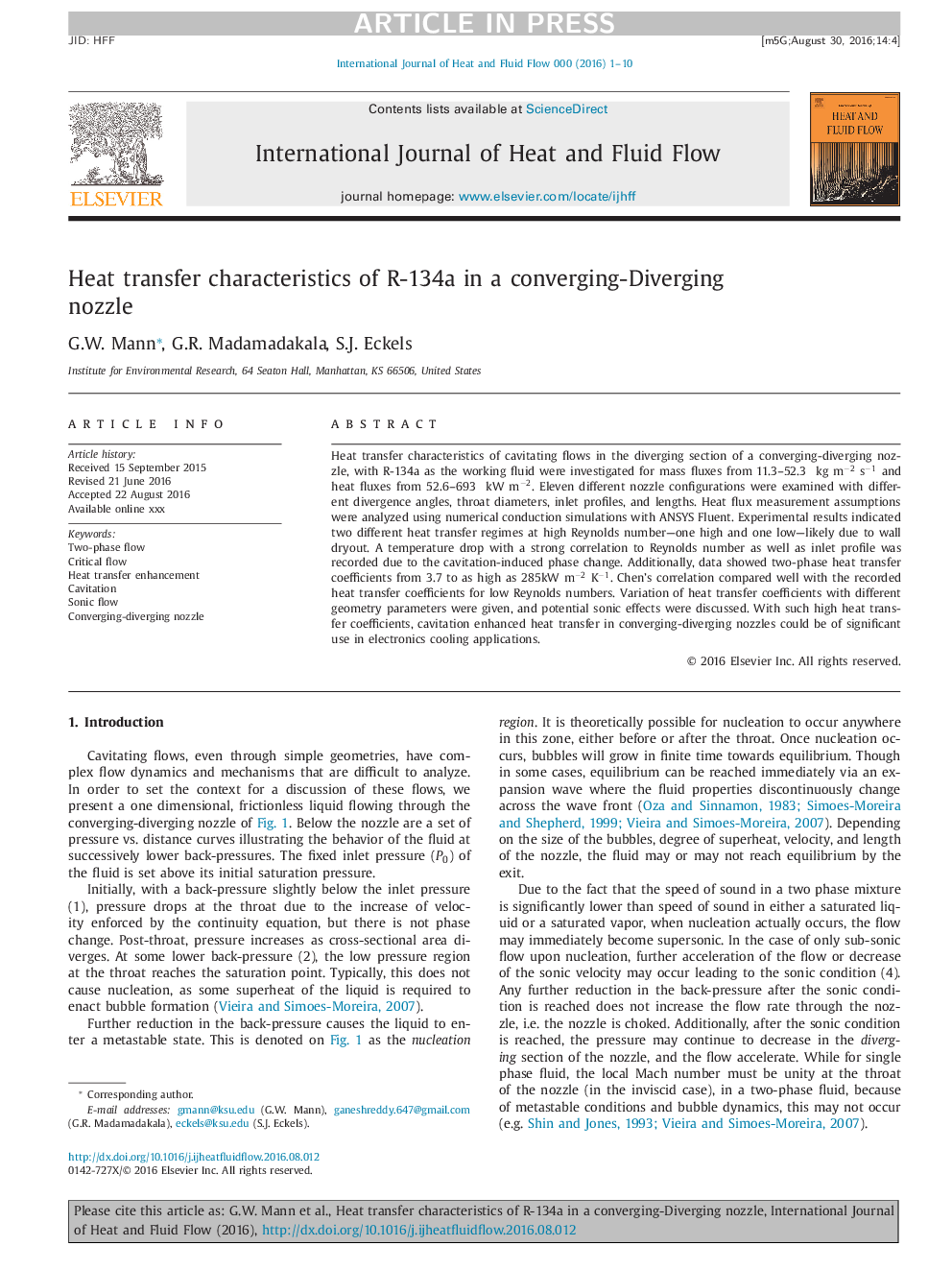| Article ID | Journal | Published Year | Pages | File Type |
|---|---|---|---|---|
| 4993248 | International Journal of Heat and Fluid Flow | 2016 | 10 Pages |
Abstract
Heat transfer characteristics of cavitating flows in the diverging section of a converging-diverging nozzle, with R-134a as the working fluid were investigated for mass fluxes from 11.3-52.3Â kg mâ2 sâ1 and heat fluxes from 52.6-693Â kW mâ2. Eleven different nozzle configurations were examined with different divergence angles, throat diameters, inlet profiles, and lengths. Heat flux measurement assumptions were analyzed using numerical conduction simulations with ANSYS Fluent. Experimental results indicated two different heat transfer regimes at high Reynolds number-one high and one low-likely due to wall dryout. A temperature drop with a strong correlation to Reynolds number as well as inlet profile was recorded due to the cavitation-induced phase change. Additionally, data showed two-phase heat transfer coefficients from 3.7 to as high as 285kW mâ2 Kâ1. Chen's correlation compared well with the recorded heat transfer coefficients for low Reynolds numbers. Variation of heat transfer coefficients with different geometry parameters were given, and potential sonic effects were discussed. With such high heat transfer coefficients, cavitation enhanced heat transfer in converging-diverging nozzles could be of significant use in electronics cooling applications.
Related Topics
Physical Sciences and Engineering
Chemical Engineering
Fluid Flow and Transfer Processes
Authors
G.W. Mann, G.R. Madamadakala, S.J. Eckels,
